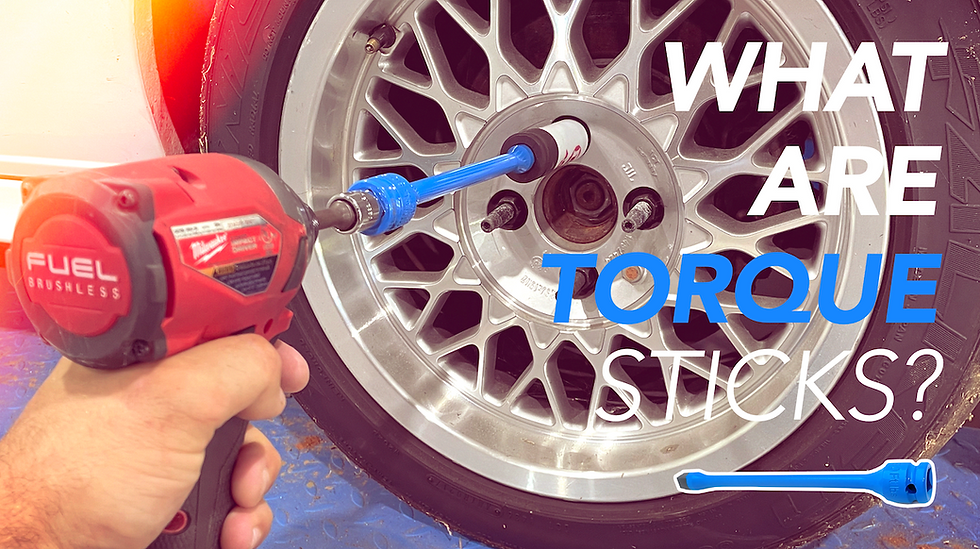HOW TO PERFORM A LEAK DOWN TEST ON A BMW
- Justin Schaub

- Nov 8, 2022
- 4 min read

Sadly, in this day and age, most mechanics prefer to throw parts at an issue rather than trying to diagnose the real problem. In our opinion, this is what really separates the boys from the men when talking about good mechanics. In today’s blog we will be discussing a leak down test. What it is, why its important, and how to perform one.
What is a Leak Down Test?
Simply put, this test helps determine the condition of your internal combustion engine by introducing compressed air in the cylinder and measuring the rate at which it leaks.

Why Is This Important?
An internal combustion engine is actually just an air pump. It sucks air into the cylinders, compresses that air and then exhausts the air through the headers. Because of this, the engine needs to have tight seals so the pistons can compress as much air as possible. If there is a leak in the system, the cylinder compression is reduced and you will have a poor performing engine. Air can be leaked through multiple areas in the engine. Here are a few:
Intake Valves
Exhaust Valves
Head Gasket
Piston Rings
This test will help you find out where the air could possibly be leaking from and narrow down your investigation of what to fix. This can save you time and a whole lot of money if you need you have a faulty head gasket instead of valve seals.
How to Perform a Leak Down Test
The test is actually fairly simple to perform but you will need a few tools. Don’t worry, they are fairly cheap, and I have some links for you.
Leak Down Tester
Air Compressor
To start, it is best to have your engine warm. This allows the rings to expand and make a better seal on the cylinder walls. You will then need to remove all the spark plugs. The leak down tester is a hose with an air pressure gauge attached to it. This will be how you measure the pressure the cylinder can hold over a set period of time.
We can only test one cylinder at a time, so we recommend starting from front to back. You will need to make sure you are at exactly top dead center (TDC) for the tested cylinder. TDC refers to the point at which the piston is highest in the cylinder on the compression stroke. If you are 360 degrees out on the exhaust stroke or intake stroke, you will see leaks from either of the valves being open.
Once you found TDC on cylinder one, insert the tool into the spark plug hole and apply 100 PSI. Make sure you do not over pressurize the cylinder.

You should not have more than 10% leakage in any cylinder for a fresh and healthy motor. Secondly, you should not have more than 5% variance between any 2 cylinders. If you have more than two of these scenarios, you will need to investigate further where the leaks are coming from.
Example: If you are applying 100 PSI and your leak down pressure reads 85 PSI, that is 15% leakage.
Perform this on all 6 cylinders and record your data.
How to Diagnose
As explained in the beginning of this blog, there can be different sources for leaks, which will help you determine what repairs need to be done.

Intake Valve Leak - Intake valve leaks are common and can either be from worn valve seats or valve stem guide seals. If the leak is coming from the valve stem guides, you will usually also see smoke coming from your exhaust as extra oil will be burnt in the cylinder. If the leak is coming from the seats, you will need to remove the head, replace and lap the valve. You can tell if the leak is coming from the intake side because you will hear air through the intake manifold.
Exhaust Valve Leak - This will be the same exact diagnostics as the intake valve, but if the seats are leaking you will hear air coming out of the exhaust.
Head Gasket - Compressed air escaping from the head gasket 100% means you have a blown head gasket, cracked block, or cracked head, and could already be experiencing overheating issues. If this is the case you should be able to hear or feel air escaping from the head gasket. Another good way to tell is by taping a lighter weight paper to screwdriver or stick and running it around the head. If there is air leaking, you will see the paper flutter. Often times you can also open your coolant expansion tank cap, and you will hear air leaking from there too.
Piston Rings - This will be a little harder to diagnose, and will require the use of a compression test to dive deeper.
I hope this helps you get more comfortable with diagnosing your engine and saving a little money from having to take it to a shop. These simple tests can be a lifesaver.
Purchase the tools you need to perform this test:
Race German LLC may earn an affiliate commission if you purchase something through recommended links








Comments